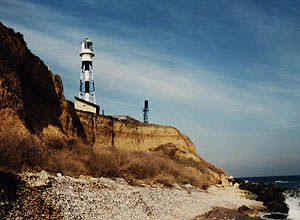|
GIS has developed rapidly over the last 30 years to become one of the most important tools at the coastal managers disposal. Key innovations in a variety of disciplines have facilitated the development of GIS, including computer science, database systems, image processing, and remote sensing.
At first, GIS were developed to address specific problems, such as the Canada Geographic Information System developed to address large-scale land use planning concerns. These systems were unique, expensive, difficult to use and allowed only limited data transfer. As the GIS market expanded throughout the 1980s and 1990s, commercial companies developed generic systems which can be bought cheaply, are easy to use, and allow the incorporation of data from a wide variety of sources (for example, see www.mapinfo.com, www.esri.com, www.idrisi.clarku.edu). A summary of the history of GIS can be found at the GIS Timeline
In parallel with the development of GIS, has been the development of Remote Sensing technology, most notably aerial photography and satellite imagery. Remotely sensed data is now available relatively cheaply and easily via the internet and is a key source of data for inclusion in GIS (for example, see www.coastbase.org, www.terraserver.com).
Emergence of GIS for ICM
Bartlett & Wright (1999) stated that coastal and marine GIS face "the challenges of representing a highly dynamic, multi-dimensional, fuzzy bounded environment" (p. 309). Despite these challenges, GIS use in the coastal zone is set to increase, for several reasons:
- need for data to make decisions
- cost of research in marine areas very expensive
- commercialisation of GIS (especially in hydrography and oceanography).
Perhaps even more important in the emergence
of the use of GIS in ICM has been the increased incidence
of collaborative coastal / marine management in which
the need for good quality information has proved crucial.
This is demonstrated in the Epirus region of Greece
on the Ionian Sea, follow the link to the full
example.
Currently, the greatest constraints to the use of GIS for ICM are:
- data quality
- how data can be updated
......not computing power
|

Cap Tuzla Romanian cliffs
|